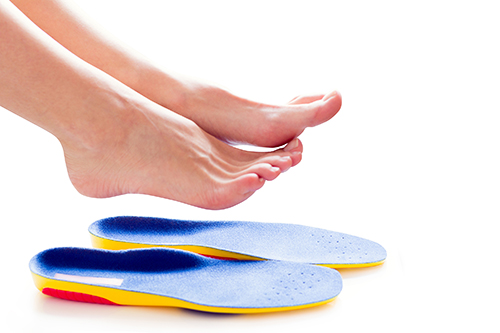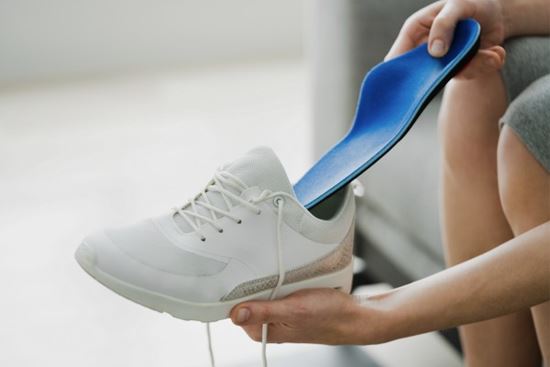Understanding Insoles: The Basics
Insoles, also known as footbeds or inner soles, are removable layers placed inside shoes to improve comfort, provide support, and enhance fit. They can make a world of difference, especially for those who spend long hours on their feet, engage in rigorous activities, or have specific foot health concerns. Whether you’re a fashion enthusiast wanting your shoes to feel as good as they look or a professional seeking relief during long workdays, understanding insoles is key.
Why Use Insoles?
Insoles are designed to support the foot’s natural arch, alleviate pressure points, and enhance shock absorption. They can help with various issues such as flat feet, plantar fasciitis, and overall foot fatigue. Here’s a closer look at the benefits:
- Improved Comfort: Insoles can cushion your feet, making standing or walking for extended periods more bearable.
- Enhanced Support: They help maintain proper foot alignment, which can reduce the risk of injuries.
- Odor Control: Many insoles come with materials that prevent bad smells and moisture buildup.
- Custom Fit: Insoles can help achieve a personalized fit for any shoe type.
Types of Insoles: Choosing the Right One
With a variety of options available, selecting the right insole can be daunting. Here’s a breakdown of the most common types of insoles you might encounter.
1. Cushioning Insoles
Cushioning insoles are designed to provide maximum comfort. They are usually made from soft foam or gel materials that absorb shock and reduce foot fatigue. Ideal for casual shoe wearers or those engaged in less rigorous activities, these insoles create a plush barrier between your feet and the shoe.
2. Arch Support Insoles
For individuals with flat feet or high arches, arch support insoles can provide necessary elevation and support. These insoles help distribute body weight evenly, reducing the strain on specific muscles and joints. They are crucial for those suffering from conditions like plantar fasciitis or overpronation.

3. Orthotic Insoles
Orthotic insoles are custom-made or over-the-counter insoles designed to address specific foot issues. They often require a prescription from a podiatrist, but there are also many high-quality over-the-counter options available. Orthotic insoles are designed to correct foot positioning, leading to better alignment throughout the body.
4. Sports Insoles
Tailored for athletes and active individuals, sports insoles are crafted to optimize performance and provide superior cushioning during physical activity. They often feature moisture-wicking materials and enhanced arch support that helps absorb impact during high-intensity movements.

Comparison Table of Insole Types
| Type of Insole | Best For | Features | Price Range |
|---|---|---|---|
| Cushioning Insoles | Casual wearers | Soft foam, gel materials | $15 – $50 |
| Arch Support Insoles | Flat feet, high arches | Elevated arch support | $30 – $70 |
| Orthotic Insoles | Specific foot issues | Custom/fitted solutions | $50 – $300 |
| Sports Insoles | Athletes, active lifestyles | Moisture-wicking, shock absorption | $40 – $100 |
Real-World Footwear Experiences
To understand the impact of insoles, let’s delve into some real-world experiences from footwear enthusiasts and professionals.

Case Study: Sarah’s Journey to Comfort
Sarah, a nurse, spends long shifts on her feet. She often experienced foot pain and fatigue by the end of the day. After consulting with a podiatrist, she switched to high-quality arch support insoles designed specifically for her flat feet. The change was remarkable—her foot pain significantly decreased, and she could focus on her patients without discomfort. This case highlights how the right insole can transform one’s daily experience.
Case Study: Mike’s Running Routine
Mike, an avid runner, struggled with knee pain after his runs. After switching to sports insoles with shock-absorbing features, he noticed a considerable reduction in pain. These insoles provided the necessary arch support and cushioning, allowing him to enjoy his runs without the fear of injury. This demonstrates that the right insoles are essential not just for casual footwear but also for high-performance activities.

Tips for Choosing the Right Insoles
Finding the perfect insoles can enhance your footwear experience. Here are some tips to guide your selection:
1. Assess Your Needs
Identify what you primarily need insoles for. Are you looking for extra cushioning, arch support, or a solution for a specific foot condition? Understanding your needs will help narrow down your options.

2. Consider Shoe Type
Not all insoles fit all shoe types. Ensure the insoles you choose are designed for the specific footwear you intend to use them with, whether it’s athletic shoes, dress shoes, or boots.
3. Look for Quality Materials
High-quality materials ensure durability and performance. Choose insoles that feature materials known for comfort, such as gel, memory foam, or breathable fabrics.

4. Try Before You Buy
If possible, try the insoles in-store with the shoes you plan to wear them in. This immediate feedback can help you determine the fit and comfort level.
5. Check for Return Policies
Since comfort is subjective, choose retailers that offer return or exchange policies in case the insoles don’t meet your expectations.

Product Highlights: Top Insoles on the Market
There are many insoles available, each catering to different needs. Below are some standout products based on comfort, support, and overall user satisfaction.
1. Superfeet Green Insoles
Known for their robust arch support, Superfeet Green insoles are perfect for both everyday use and sports. They feature a high-density foam layer for shock absorption and a natural fit for various shoe types. Users rave about their durability and comfort, making them a top pick for those seeking support.

2. Dr. Scholl’s Comfort Insoles
Dr. Scholl’s offers a variety of insoles designed for specific activities, including work and athletics. Their gel insoles provide excellent cushioning, making them a favorite among those with demanding jobs or hobbies. The affordable price point also makes them accessible for most consumers.
3. Powerstep Pinnacle Maxx Insoles
These insoles are designed for high arch support and come with a cushioned layer to provide comfort. They are excellent for those suffering from plantar fasciitis. Many users note the immediate relief they experience after switching to these insoles.
Pros and Cons of Insoles
Before committing to a particular insole, it’s essential to weigh the pros and cons.
Pros
- Can significantly enhance comfort for various shoe types.
- Available in a wide range of styles to suit different needs.
- Customizable options available for specific foot health concerns.
- Can improve overall foot health and alignment.
Cons
- High-quality insoles can be expensive.
- Not all insoles fit all shoes, leading to compatibility issues.
- Some may require an adjustment period for your feet to adapt.
FAQs about Insoles
1. What are the main types of insoles?
There are several types, including cushioning insoles, arch support insoles, orthotic insoles, and sports insoles, each tailored to specific needs.
2. Do I need custom orthotics?
Custom orthotics are ideal for individuals with specific foot conditions, but many over-the-counter options can offer excellent support for general needs.
3. Can I use insoles in any shoe?
While many insoles are versatile, it’s essential to ensure they fit well in the shoes you intend to use them with to avoid discomfort.
4. How often should I replace insoles?
Insoles should typically be replaced every 6 to 12 months, depending on usage and wear. If they start to lose their cushioning or show signs of damage, it’s time for a replacement.
5. Are more expensive insoles always better?
Not necessarily. While high-quality materials often come at a premium, personal comfort and needs should be prioritized over price alone.
6. Can insoles help with foot odor?
Yes, many insoles are designed with moisture-wicking materials and antimicrobial properties to help control odors.
7. How do I know if an insole fits me?
The insole should fit snugly without crowding your toes or causing discomfort. It’s best to try them with the shoes you plan to wear them in.
8. Do insoles really make a difference?
Many users report significant improvements in comfort and foot pain alleviation, confirming that the right insoles can have a positive impact on your foot health.
9. How do I clean my insoles?
Cleaning methods depend on the material; however, most insoles can be hand-washed with mild soap and air-dried.
10. Are gel insoles better than foam?
It depends on personal preference. Gel insoles provide excellent shock absorption, while foam tends to offer a softer feel. Test both to see which suits you best.
Conclusion: Step into Comfort!
In conclusion, insoles are a valuable addition to any footwear collection. Whether you’re looking to alleviate pain, increase comfort, or provide support during activities, the right insole can revolutionize your shoe-wearing experience. By understanding the different types, benefits, and tips for selection, you’re well on your way to stepping into comfort! Don’t hesitate to explore your options and find the perfect insole that meets your unique footwear needs.
For further reading on foot health and insoles, check out these resources: National Institutes of Health and American Podiatric Medical Association.